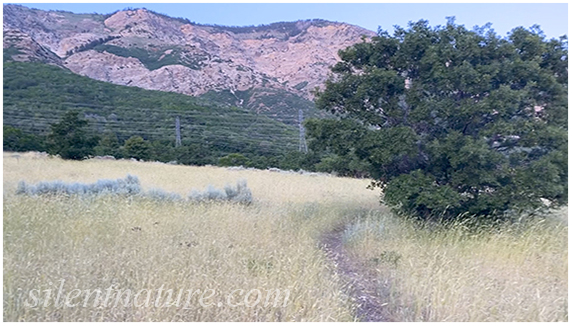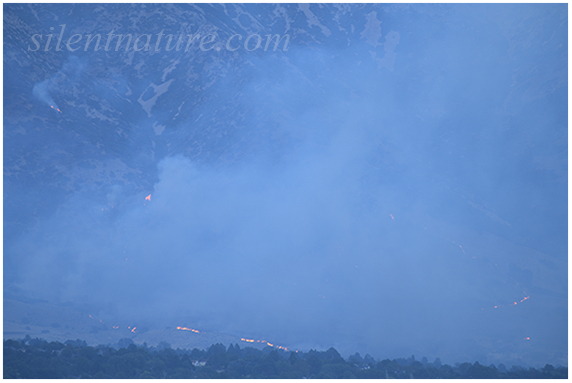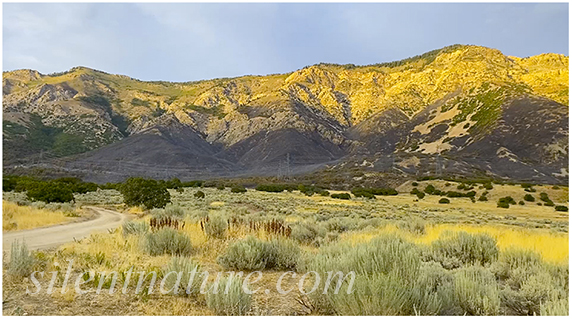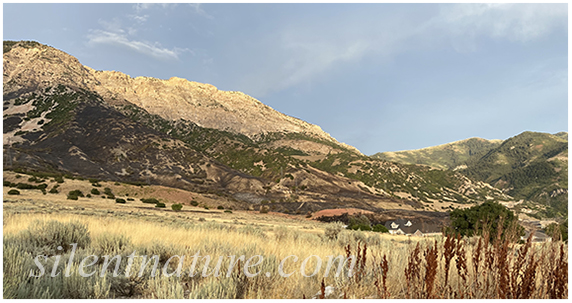 |
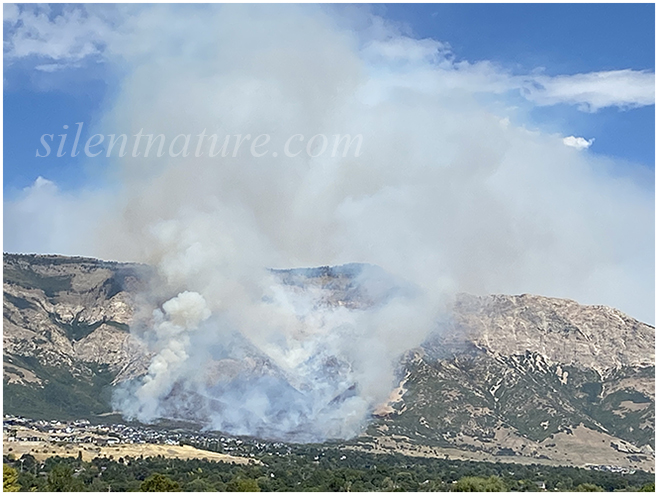 |
| The North Ogden Wildfire |
|
Having just moved into this area, I have spent a lot of time photographing the wildlife, flowers, and mountains here, especially from Willard Peak to what the locals call "The Divide." This past June as I hiked into the foothills above North Ogden, I was quite concerned about how early the wild grasses had dried out, creating a very volatile fire hazard. In contrast, last year when I first moved back to Utah, also in June, I was surprised at how green the mountains had appeared. I had been gone for 20 years, and during that time all of my vacations to Utah had been in the fall. By then all the grasses had dried out. That was to be expected, after all, this is a desert climate. But I hadn't seen the green grasses and bright leaves of spring on the mountainsides for so long, that I had forgotten just how rich and lavishly green they could look in June before the summer heat of July and August had baked them dry.
Then came the mildest winter I have ever seen. As we went through December and January with nothing more than a trace of snow, I started telling people, "Don't worry, we get snow (down here in the valley) almost every May. I remember one year standing in front of the Park Building at the Univeristy of Utah and talking to a girl about our crazy weather. It was 28 F and snowing, even though just the previous day had been 80 F. That year we got snow every week in May." But my assurances to people didn't help much. The last snowfall we had this year was the first of April. So we not only didn't get any snow in May, but we came one day short of not getting any snow for the preceding month as well, as if Mother Nature had played us, "You're going to get some snow this month, ha, ha, April Fools!". As it turned out, our entire winter was quite dry. It seems that I could count our snow storms on the fingers of one hand, and most of them did not even cover the grass of our front lawn. So here in the Pleasant View and North Ogden area the snows melted out of our foothills much earlier than usual. On the 19th of June I made a video of just how dried out the grasses were already. I meant to post the video and write an article, but got too busy with other priorities. Almost two months passed without any wildfires, and with the mountains as dry as they were, I was almost surprised. Temperatures have been cooler than usual this past month, and we have even gotten some cloud cover and a little moisture in spots here and there. I began to think we might make it through the year without a serious fire. Then it happened. I was out on Highway 89 when two pillars of smoke rose simultaneously from behind the highest row of houses on the side of the mountain. I wish I had pulled over and taken that original photo, it clearly showed that the fire started in two different places, but I was in traffic and I was under the illusion that I if continued toward home I would get a better view. I never did get a better view, and the more the fire grew the more it looked like just one big fire.
The fire appeared to have started from right where I had made that video last June. From that view there is a patch of gamble oak at my back that stretches for about 100 yards to a brand new housing development that is still rapidly growing toward the mountains. From Highway 89, it appeared that same patch of oak gamble was on fire, just a few feet away from those houses. You can barely see a couple of houses at the bottom of this next picture.
This past winter I had discovered an easy access to that same area, and camera in hand, had begun exploring. Then in the spring I noticed that there were cacti up there. I only ever saw one blossom, and it had only opened up part way, but there were many buds yet to open, so I went back every week or two hoping to catch the cacti in bloom. I never did find another blossom. Perhaps because of the early disappearance of snow, they just never had enough moisture to bloom. The firecrews responded quickly, but while I was standing in my kitchen just three miles from the fire, I noticed that the wind was blowing so hard that the branches on our maple trees were just whipping all over the place. I didn't see how the firecrews could possibly control a fire like that under such horrible wind conditions. But those men, bless their hearts, somehow got it contained. It was very fortunate that the wind was blowing towards the mountain which, with its rock face, presented a nice fire barrier. It's also very fortunate that the fire wasn't where, judging from appearances, I thought it was. So far the rumor is that it started when two electric transformers blew. In some of the photos you will notice a huge high tension powerline near the mountains. Yesterday I took photos of the burn area, and you can see that, for the most part, the fire started at the power lines and burned eastward climbing the mountain.
As it turns out that dried field I took the video of remains untouched, but still sits there, within a hundred yards of a housing development, ready to explode into violence at the slightest provocation. In one of my photos you can see that the fire, at its lowest elevation, did move westward toward some houses, crawling right up to the door of the first house. You can also see fire retardant on the ground there, perhaps the only thing that saved those houses. About 15 of those houses were evacuated.
As soon as the firecrews are sure all the embers are out, I will be able to hike again into that area where the cacti refuse to bloom. But we still have at least two more months of extreme fire hazard and those houses that currently reside on that mountain are at extreme risk. I really wish the city, the county, and whatever other government agencies are involved including the federal government, would prohibit the building of houses higher onto the mountain. They could cost all of us more than our fair share of taxes. We could all pay for the fire crews to go the extra mile to protect those houses. If those houses burn the insurance companies will lose money and raise the insurance on all of our houses. And the animals need somewhere to feed, especially in the winter time when the snow in the mountains is too deep for them to find food. One lady told me that the animals will just go over the mountain to the other side, but then I met a lady from the other side. She moved out of that valley because it too, in her opinion, had overdeveloped. Think of that, our development is so unchecked that it is not only driving the animals out, it is driving the people out. One of my nieghbors just up the street is moving out of state because he feels that Utah has overdeveloped. |
